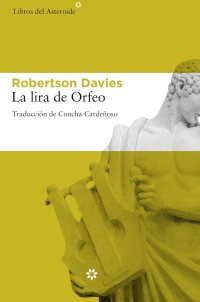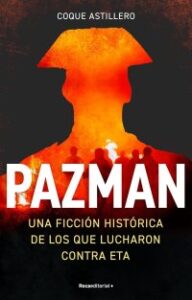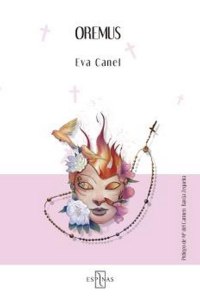
Review of the book “The Lyre of Orpheus”, by Robertson Davies
Review/Opinion:
The foundation established with the legacy of patron Francis Cornish has decided to undertake one of its first projects: the representation of Arthur of Britain, an unfinished opera by ETA Hoffmann. The person in charge of carrying out the task will be Hulda Schnakenburg, a brilliant and peculiar doctoral student, who will have the help of Simon Darcourt in writing the script. Unfortunately, the work is complicated in such a way that those involved in the project seem to be representing the plot of the opera and making good of Hoffmann’s quote that says “Orpheus’s lyre opens the doors to the other world.” In this novel, Davies shows his extraordinary knowledge of the performing arts, capturing with special brilliance the ins and outs of theatrical and musical productions, while reflecting on how often, and despite the appearance of education and urbanity that surrounds us, our most base instincts prevail and lead us to act unexpectedly.
A brilliant conclusion to the Cornish Trilogy in which the author’s narrative talent will once again amaze both his faithful readers and those who approach his work for the first time.
“The Lyre of Orpheus” is a fascinating work of literature written by renowned Canadian author Robertson Davies. Published in 1988, this captivating and complex novel transports us to a world where art, music and mythology collide, as Davies explores themes such as creativity, identity and the power of art to transform our lives.
The plot of “The Lyre of Orpheus” focuses on the life of Simon Darcourt, a talented composer who, after a personal tragedy, immerses himself in the world of music and artistic creation. As we follow his journey from his childhood to his career as a musician, Davies offers us an in-depth, multifaceted look at both the creative process and the challenges an artist faces in his pursuit of perfection.
One of the most notable strengths of this novel is Davies’s ability to create complex and realistic characters. Simon Darcourt is a captivating protagonist, full of contradictions and passions that make him a memorable character. As the plot develops, Davies also introduces a series of supporting characters, each with their own story and motivations, which further enrich the narrative world and allow us to explore different aspects of art and creativity.
Davies’s prose is elegant and rich in detail. His narrative style immerses us in the settings and atmospheres created by the author, allowing us to experience music and art in a vivid and emotional way. Furthermore, his extensive knowledge of mythology and history is reflected in the plot, adding an additional layer of depth and meaning to the main story.
“The Lyre of Orpheus” also stands out for its exploration of universal and transcendental themes. Davies examines the very nature of art and its power to convey emotion and spark the imagination. Through the story of Simon Darcourt, the author invites us to reflect on the relationship between the artist and his work, as well as the search for beauty and meaning in an often chaotic and confusing world.
In addition to its captivating narrative and memorable characters, “The Lyre of Orpheus” also addresses philosophical and moral questions. Davies raises questions about the responsibility of the artist and the impact of his work on the world, as well as the relationship between life and art. As Simon Darcourt faces his own demons and struggles to find his creative voice, the reader is thrust into deep reflection on the purpose of life and the importance of artistic expression.
Robertson Davies (1913-1995) is one of the most important Canadian authors. He published eleven novels, organized in trilogies: the Salterton Trilogy: At the Mercy of the Tempest, Yeast of Malice and A Mixture of Infirmities; the Deptford Trilogy: The Fifth in Discord, Manticore and The World of Wonders; the Cornish Trilogy: Rebel Angels, That Which Roots in the Bone and The Lyre of Orpheus; and the unfinished Toronto Trilogy, to which Murder and Souls in Sorrow and A Cunning Man belong. He also highlights the short story anthology Holiday Spirit. Ghost stories.
1. **The world of theater and music:** The novel is set in the world of theater and operatic music, focusing on the story of Eo Sharp, a talented but enigmatic opera director. Davies explores the ins and outs of the theater world, the egos of artists and the passion for classical music.
2. **The search for success and fame:** Eo Sharp is an ambitious character who seeks recognition and fame in his career as an opera director. Throughout the novel, he strives to achieve his goals while facing obstacles and ethical dilemmas on his path to success.
3. **The Mystery of Owen Halliday’s Estate:** The plot revolves around the mystery surrounding the estate of Owen Halliday, a deceased opera composer whose unpublished works could change the course of classical music. The discovery of these works triggers a series of events that impact the main characters and reveal hidden secrets.
4. **Themes of identity and self-discovery:** Davies explores themes of identity and self-discovery through the characters, especially Eo Sharp, whose quest for success is intertwined with his search for identity and purpose in life. As the plot progresses, the characters confront their own hidden truths and struggle to reconcile their ambitions with their personal values.
5. **The Transformative Power of Art:** “The Lyre of Orpheus” examines the transformative power of art, especially music, to inspire, heal and connect people. Through the music of Owen Halliday and the performances of Eo Sharp, the characters discover the ability of art to transcend the barriers of time and space, and touch the human heart in deep and lasting ways.
These points summarize the highlights of “The Lyre of Orpheus” by Robertson Davies, a novel that combines drama, mystery and reflection on the power of art and music in our lives.
Source: https://algunoslibrosbuenos.com/la-lira-de-orfeo


